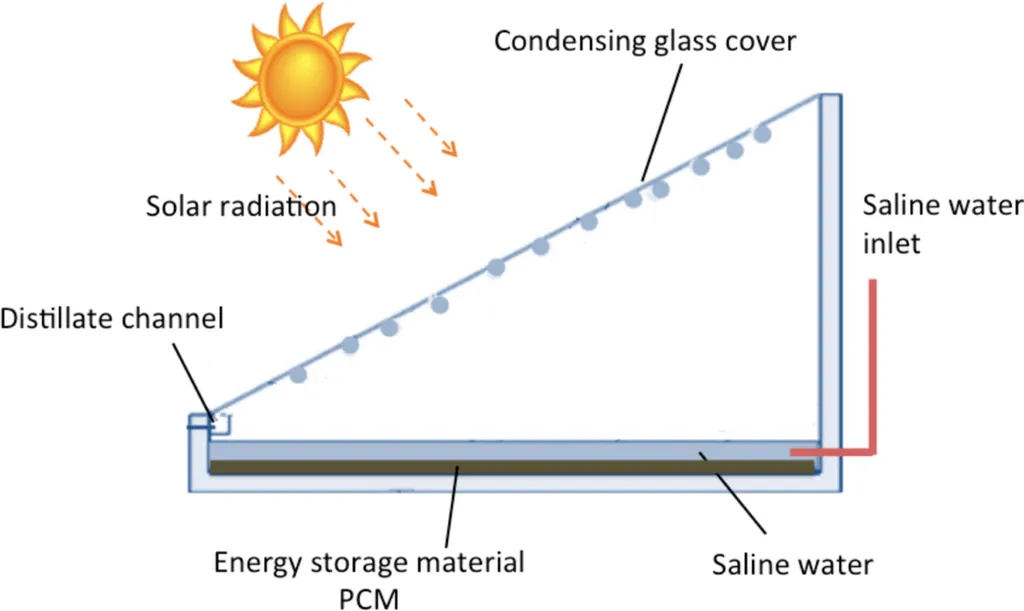In the arid landscapes of Iran, where freshwater is a precious commodity, a simple yet ingenious solution is gaining traction: solar stills. These devices, which use sunlight to desalinate water, are a beacon of hope for decentralized freshwater supply in semi-arid regions. Recent research led by Hashem Siami from the Department of Management and Control Desert at the University of Tehran, Karaj, Iran, has shed new light on how to optimize these systems for maximum efficiency and cost-effectiveness.
Siami and his team conducted an experimental study to evaluate the productivity of square-pyramid solar stills under the semi-arid climate of Karaj. They tested six configurations, varying the tilt angle and cover material of the stills. The results, published in the journal ‘Cleaner Water’ (translated to English as ‘آب پاکتر’), revealed that glass covers consistently outperformed plastic ones. The 30° glass configuration (G30) achieved the highest yield, reaching 1.264 liters per square meter per day on a representative clear-sky day. This configuration exceeded the productivity of other tested configurations by a significant margin, with the lowest performing being the 10° plastic configuration (P10).
“The optimization of tilt angle and cover material substantially improves the productivity, distillate quality, and cost-effectiveness of pyramid solar stills,” Siami explained. “Under Karaj’s conditions, the 30° glass configuration offers the most favorable trade-off between these factors.”
The economic evaluation of the study indicated that the cost per liter (CPL) of water produced varied significantly among the different configurations. The G30 configuration yielded the lowest CPL at USD 0.0017 per liter, making it the most cost-effective option. In contrast, the P20 configuration had the highest CPL at USD 0.008 per liter due to its lower productivity.
The implications of this research are profound for the energy and water sectors. As the world grapples with the challenges of climate change and water scarcity, decentralized desalination solutions like solar stills are becoming increasingly important. By optimizing the design of these systems, we can enhance their productivity and reduce the cost of freshwater production, making them more accessible to communities in need.
“This research supports the broader viability of solar-driven still desalination for decentralized freshwater supply,” Siami noted. “It’s a step towards making these systems more efficient and cost-effective, which is crucial for their widespread adoption.”
The study also conducted a comprehensive water-quality assessment of the distillate, showing a 99% reduction in salinity proxies relative to feedwater. The distillate met potability targets for pH, total dissolved solids/electrical conductivity, turbidity, and major ions, ensuring that the water produced is safe for consumption.
As we look to the future, the findings of this research could shape the development of more advanced solar still designs. By incorporating innovative materials and optimizing the geometry of these systems, we can further enhance their performance and reduce costs. This could open up new opportunities for decentralized desalination in arid and semi-arid regions around the world, contributing to a more sustainable and water-secure future.
In the quest for sustainable freshwater solutions, solar stills are proving to be a valuable tool. With ongoing research and development, these systems have the potential to make a significant impact on global water security, one drop at a time.

